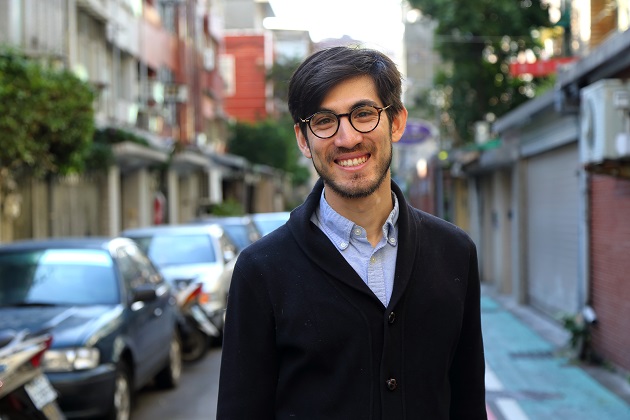Reflexive Taiwan Series
The French Artist Who Sees A Baroque Style out of Taipei

Source:Justin Wu
Julien Coignet, a Seoul-based French artist now residing in Taipei Treasure Hill Artist Village, has shown more interest in the time-worn amber tiles of an ordinary household than the shiny black marble-walled modern apartment that sat right across, whose design he referred to as rather “cheesy,” “capital,” and “massively produced.”
Views
The French Artist Who Sees A Baroque Style out of Taipei
By Sharon Tsengweb only
Zig-zagging through some residential alleys in Taipei, French artist Julien Coignet kept a keen eye on the “traces of history” left in the jumble of age-old dwellings that are now sitting in the growing shadows of the prospering modern buildings.
 Image: Justin Wu
Image: Justin Wu
As he quick paced through the district, he exclusively stopped by an ordinary household to examine the unique maps of veins each mosaic tiles were embedded with. “Every tile is different,” he pointed out. Seeing a "Baroque" style out of the exquisitely decorated households, the artist has clearly shown more interest in the time-worn amber tiles than the shiny black marble-walled modern apartment that sat right across, whose design he referred to as rather “cheesy,” “capital,” and “massively produced.”
During his second residence in Taipei Treasure Hill Artist Village, the Seoul-based French artist extended his Mosaic Project from South Korea to Taipei, where he gave away free stickers of symmetrical geometry shapes that resemble common patterns of mosaic tiles—a material widely used for architecture in Asia from 1960 to 1980, but is now gradually fading away from the cityscape.
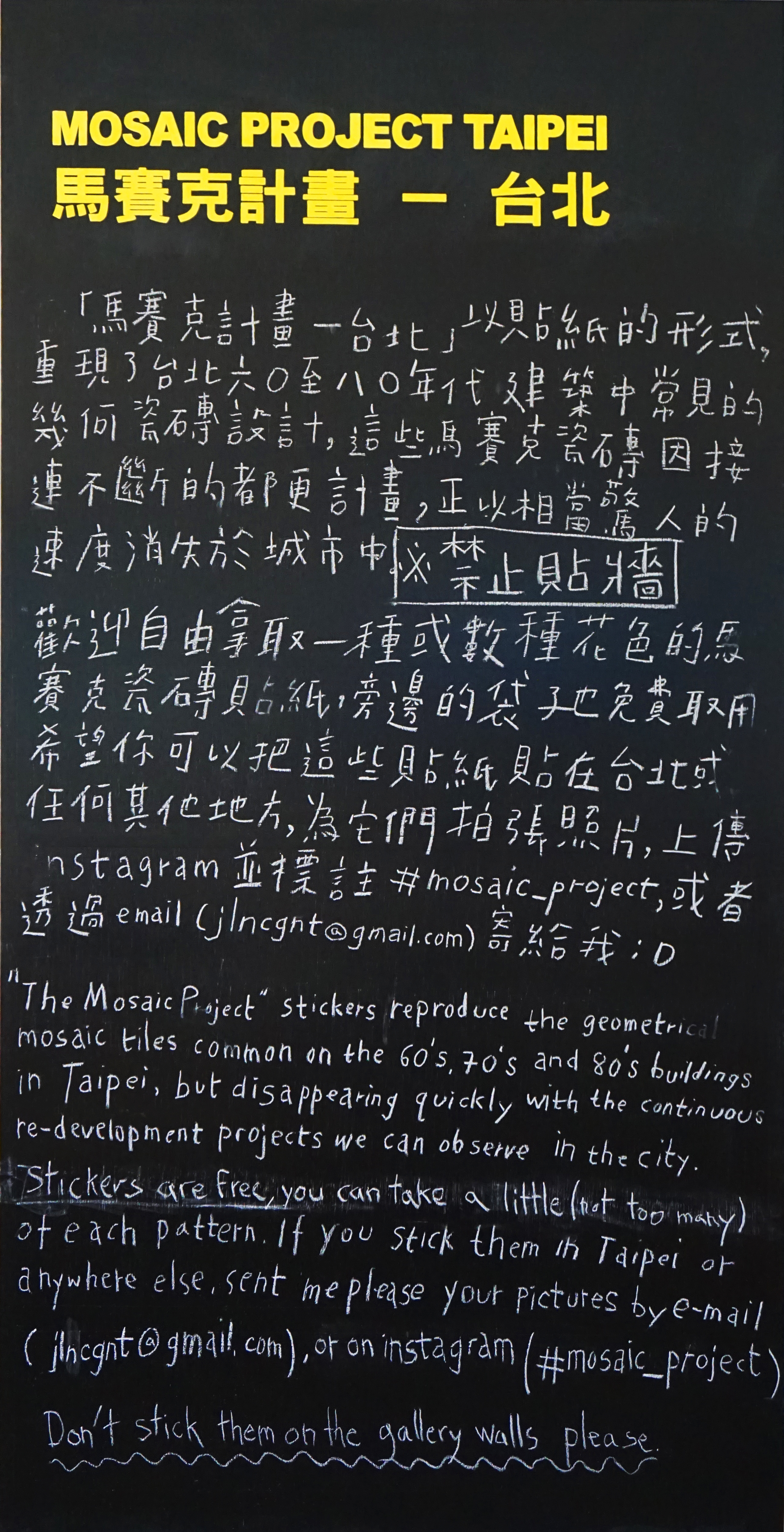
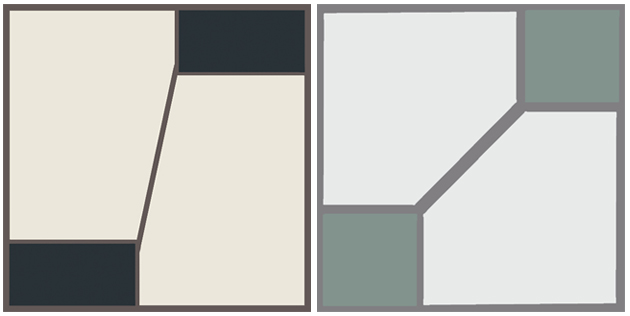 Mosaic Project Taipei, Stickers reproducing original mosaic tile, 5cmx5cm, 2018 ( © Julien Coignet)
Mosaic Project Taipei, Stickers reproducing original mosaic tile, 5cmx5cm, 2018 ( © Julien Coignet)

“A city is a living organism made up of layers of history.” By distributing the stickers, Coignet invites people to spread these little “reminders of the glory of the past,” making them reappear in the corners of this continuously transforming city, shedding light on what urban planning is depriving us of, and bringing the richness back to the society, which is like an organism that needs to be exposed to a variety of virus to become stronger.
“It’s my reaction to this globalization phenomenon.” Conveyed through the stickers, he questions the city: How can we preserve what we are losing?
Globalization Backfires
As one of the invitees of the Youth Forum 2018 who discussed with the mayor of Taipei the city’s uniqueness and inclusivity with reference to the Summer Universiade 2017, Coignet has pointed out that holding international events of such can mean allowing foreign investments flowing in the city to wash away its localness.
“The experience we have now is that the city is not for the commonwealth. It's more for the interests of the few,” concluded Coignet from his observations in the cities he lived in: Paris, Seoul, and Taipei. “More and more we are living in a society divided into two or three groups of people, and the people with the more capital are invading the common's space.” However, while anti-Olympic protests are breaking out in France and Korea, Taiwan seems to have been pretty willingly excluded from this anti-globalization atmosphere.
“Globalization is not inclusivity,” said the artist, firmly. “Economy rules the world. It rules the relationships between people.” He pointed out that Muslims from Dubai or Saudi Arabia are often very welcomed in Paris, while those of the same religion, but coming from Syria, do not share the same privilege.
“In the future perhaps there will be an inversion of the phenomenon.” Though being a more-often-welcomed Westerner in Asia, he reminds that those “who feel that they are welcomed everywhere will have to face the day that they are not super welcomed anymore. That can happen.”
Multi-culture vs Inclusivity
According to him, many South Korean farmers in the countryside seek help from agencies to find Vietnamese women to marry, who are often faced with “serious problems of integration” moving to such a monoethnic country.
“Taiwan has a relatively wider diversity of people already." With its history and geographical location, Taiwan has long been absorbing and blending different influences. “It’s easier for Taiwanese to accept someone different,” observed Coignet.
Speaking of multi-cultural cities, Coignet thought of Cophenhagen, Denmark. The city encompasses a diverse array of cultural backgrounds, he says. Yet “the people strongly keep their own culture”–a phenomenon that is widely observed in Northern European countries.
Inclusivity, on the other hand, stresses more on communication, integration and participation. Though Taiwan might not be considered polyethnic, he feels the inclusivity of the society. “It's hard to share totally the culture of another country,” “but altogether I’m able to communicate with the people that accept me. So I’m kind of included in it.”
Combination and Mix–Strength or Weakness?
While multi-cultural communities preserve the wall between different cultures, inclusivity can mean breaking the walls, resulting in combination and mixes of culture. Regarding this, some hold a critical view, saying that this would only widen the scope of a culture, but not deepen it. Including everything could mean constantly changing and losing oneself’s identity.
Faced with this question, Coignet nevertheless remains confident in Taiwan’s inclusivity. “If you visit Japan, it’s Japan. If Korea, it’s Korea.” These countries might have a clear iconic culture of their own, yet according to him, more and more artists are more curious about places they do not have a preconception of.
“Taiwan is not very famous abroad,” and according to his experience, people of Taiwan don’t seem very confident about advertising their homeland. But “if someone wants to have a kind of essence of Asian Culture, Taiwan is a good place. If you don't have a lot of time, you have to select one place, visit Taiwan.”
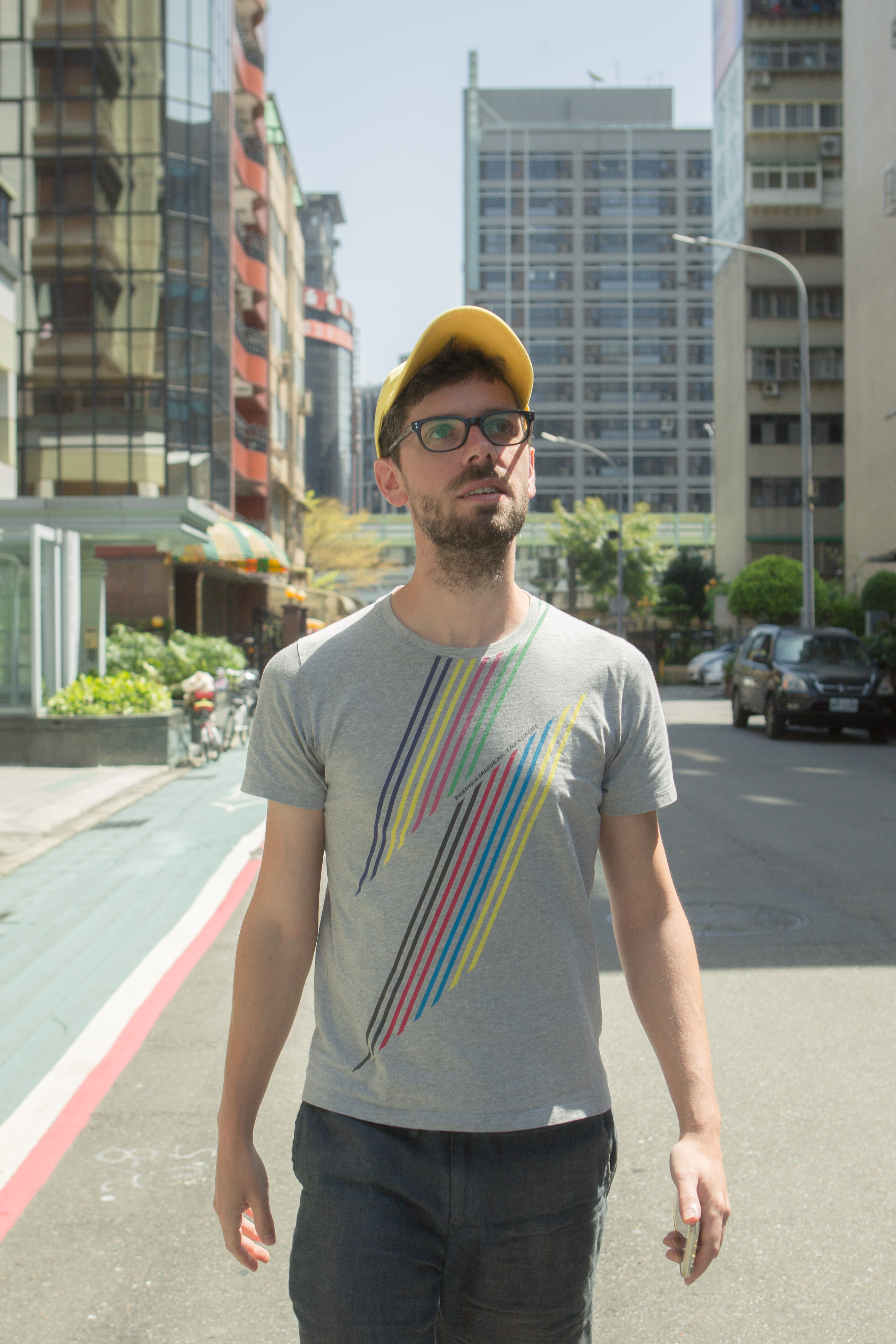 Image: Justin Wu
Image: Justin Wu
Taipei–A City to Walk in
As an artist who “discovers a city is by catching its atmosphere,” Coignet takes delight in strolling around the narrow streets and alleys in Taipei. “Taipei is a city you can walk. Walking is quite pleasant in Taipei. In Seoul it's not because they have very big avenues.”
Residing in Taipei Treasure Hill Artist Village, which is just about a 5 minute walk away from National Taiwan University, he named the campus his favorite place in Taipei. “Because of the atmosphere, the colonial architecture, in the campus it's like time traveling.”
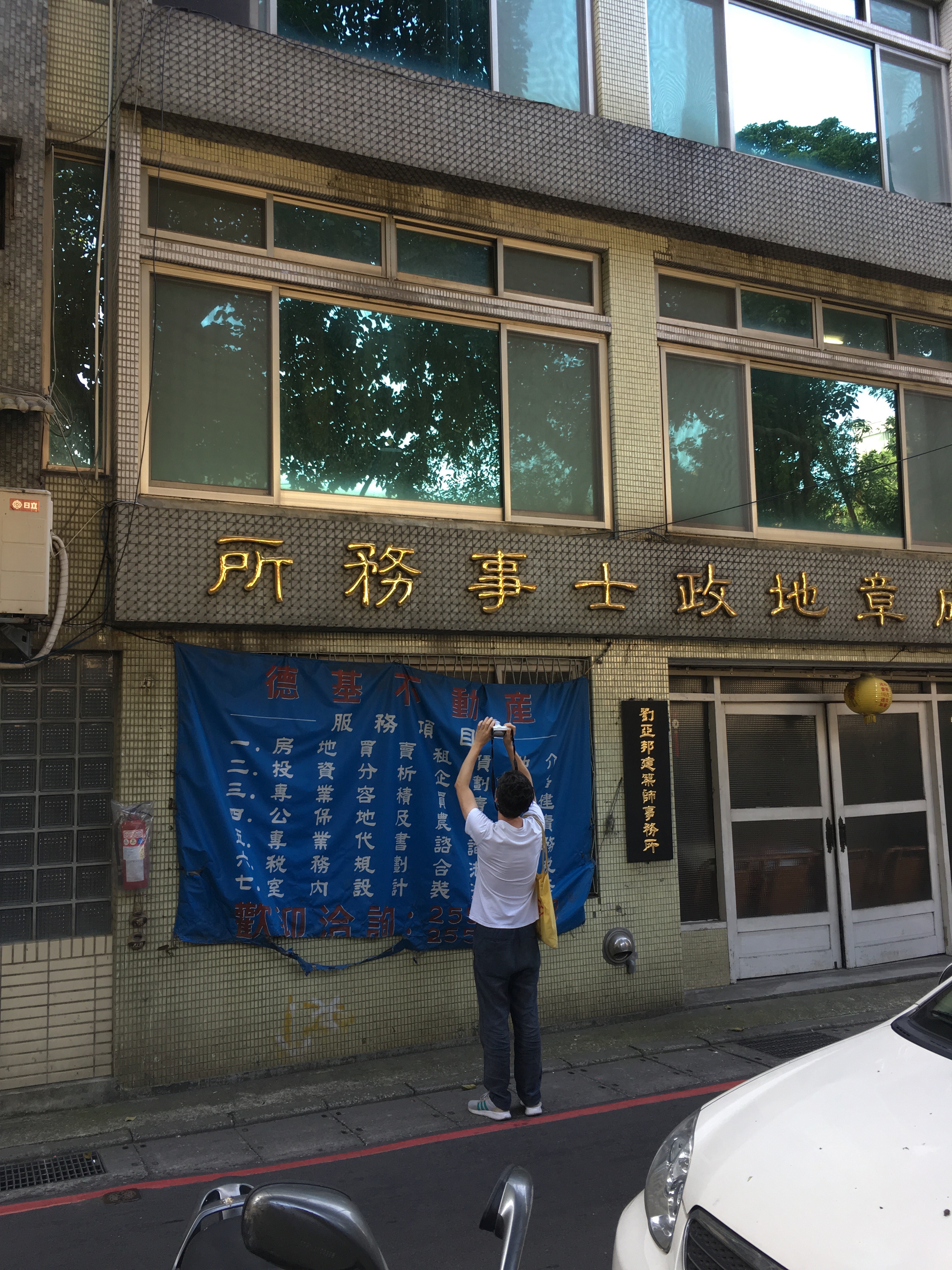 Coignet taking a picture of mosaic tiles spotted in Taipei, February 2018 (Image: Somi Sim)
Coignet taking a picture of mosaic tiles spotted in Taipei, February 2018 (Image: Somi Sim)
Artworks in Process
Coigent is currently working on a video consisting a compilation of movie scenes filmed in city parks around the world. “Parks are part of the city but the activity of the people are very different than the rest of the city. It's part of but also outside the city. A piece of nature, but organized nature.”
His video will include a long-take scene of Da’an Park Taipei, an extract from the film Vive L’amour (愛情萬歲), directed by Taiwanese director Ming-liang Tsai (蔡明亮) in 1994, when Da’an Park was still in its stark rawness. “It’s interesting to see the original look of things,” said Coignet.
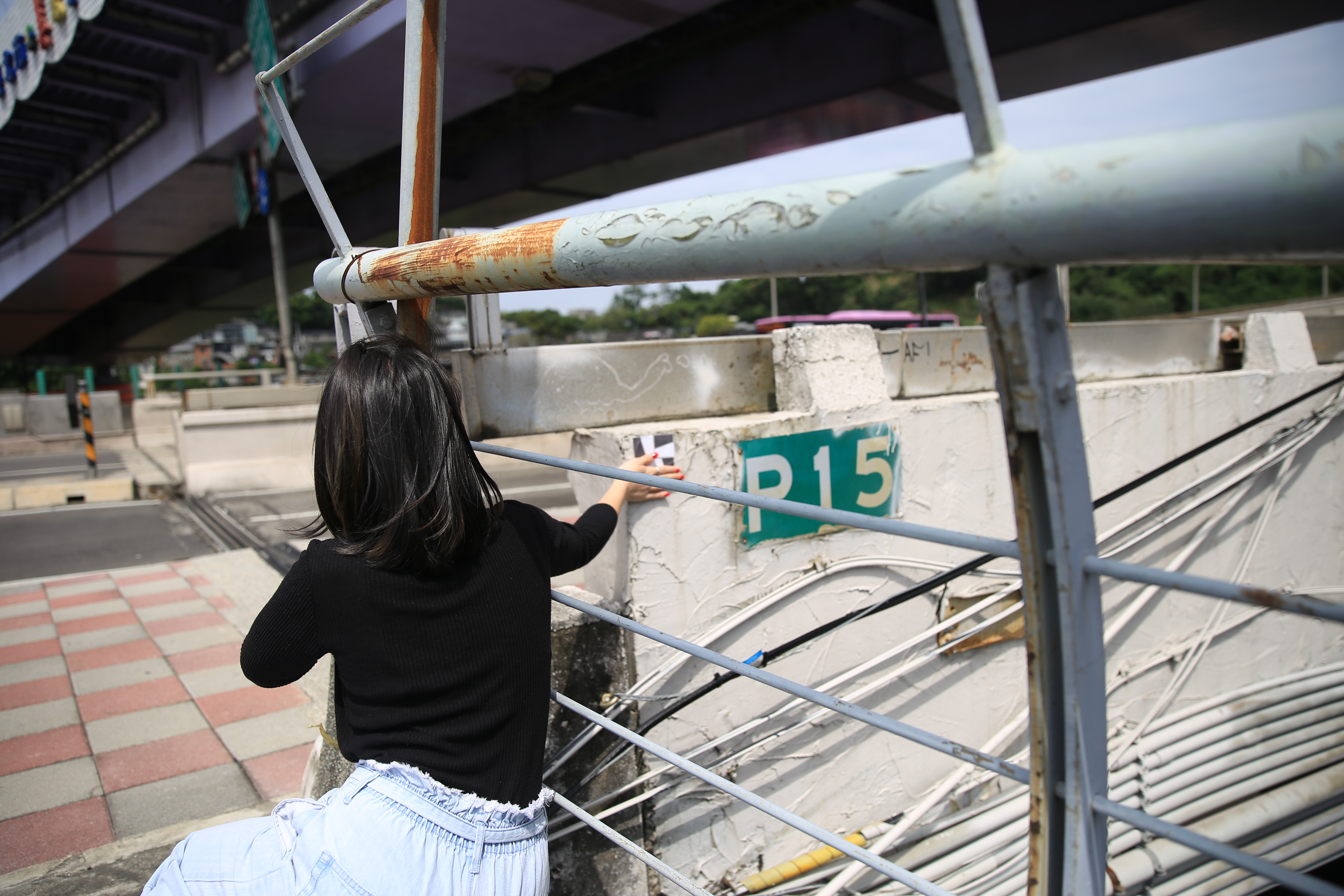
Next time you spot a mosaic sticker in a corner of Taipei City, you would know what it's telling you.
Additional Reading
♦ Centennial Academy in Old Town
♦ The Secret Relation Between An Arabian Dish and Taiwan's
♦ A Home, A Factory, A Microcosm of Taiwan’s Economy


